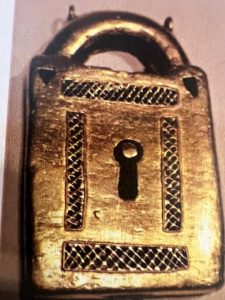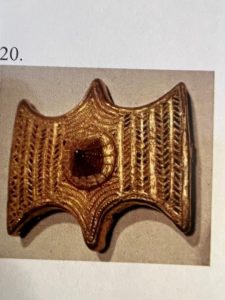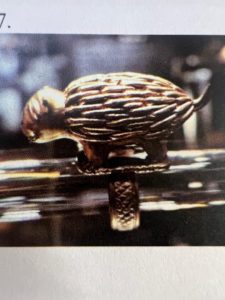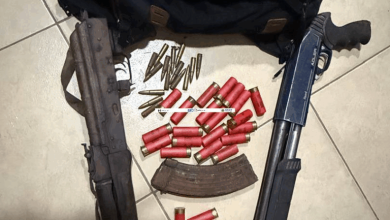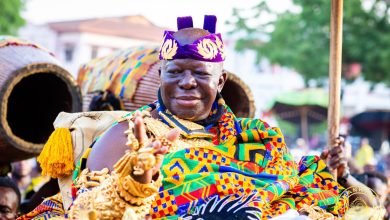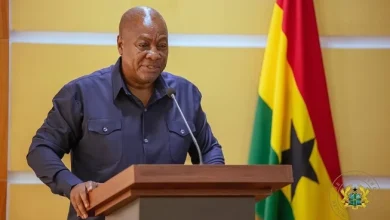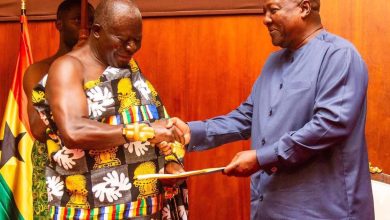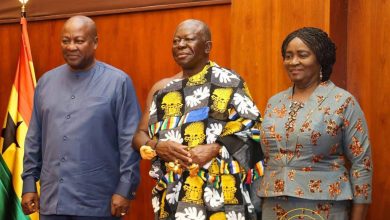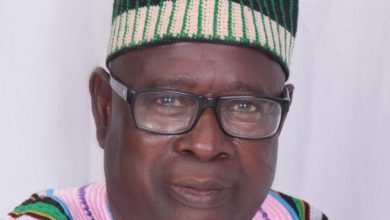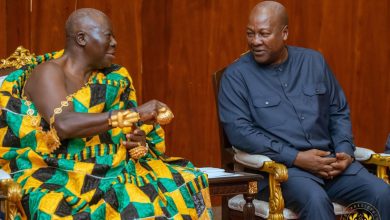Asantehene Receives 28 More Looted C19th Gold Ornament and Regalia
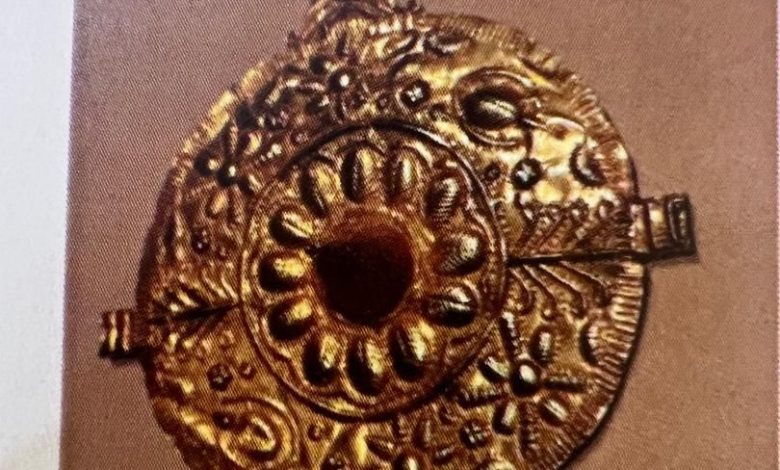
The Asantehene Otumfuo Osei Tutu II is poised to receive 28 more gold ornament and regalia dated to the nineteenth century creations of royal artisans of Asante Court and of others.
The objects include linguist staff, swords, palace security locks, rings and necklaces, proverbial gold-weights of crocodiles and gold scandals reflecting court governance structure and chiefship.
The official presentation at this weekend would be at a mini durbar at the Manhyia Palace which coincides with the centenary anniversary of the return from exile in the Seychelles of his grand-uncle, Nana Agyeman Prempeh I.
The durbar would also be in honour of the Visiting President of the Republic of Seychelles, Wavel Ramkalawan.
Intervention
Originally part of the Collection of African Gold of the AngloGold Ashanti in South Africa, the Asantehene made a direct invention earlier this year to the multinational company (formerly Ashanti Goldfields) which led to an agreement of deaccession.
They had previously been part of the Gold of Africa Museum of AngloGold Ashanti in Cape Town before they were transferred to the Javett Art Centre at the University of Pretoria. The deaccession to Kumasi however follows the approval of export permit given three weeks ago by the Reserve Bank of South Africa.
Authentication
Historian and Associate Director of the Manhyia Palace Museum, Ivor Agyeman-Duah did the authentication of acquisition coordinated with a member of the Ghana Board of AngloGold Ashanti and former Member of Parliament of Obuasi, Edward Michael Ennin.
He said the objects which were produced over a century ago, were purchased by the wealthy Swiss collector of West Africa art, Joseph Mueller in 1922 and were part of his collection which were later turned into the Barbier-Mueller Museum in Geneva.
In 2000, AngloGold Ashanti bought the Barbier-Muller Collection of 350 objects show-casing the best gold-smithery in West Africa and housed them in a-centuries old Dutch East Indian Company building in Cape Town. The Collection’s return to origins in Africa was hailed as a major cultural event.
It was later on that the AngloGold Ashanti’s Gold of Africa Museum merged with the Geneva -based one and became AngloGold Ashanti Gold of Africa Museum-Barbier Muller Museum in Pretoria.
These objects, Mr Agyeman-Duah explained, would go into a new contemporary art gallery the Asantehene has recently added to the Manhyia Palace Museum.
AngloGold delegation
An AngloGold Ashanti delegation to be led by the Chief Sustainability and Corporate Affairs Officer, Stewart Bailey which will include the Senior Vice President of Group Sustainability, Baso Sangou, the Senior Vice President Africa Non-Operated Venture, Eric Asuoboteng and Legal Resource for Corporate Affairs, Aviona Mabaso, are expected in Kumasi for the presentation.
International accomplishment
A fellow of the Yale University’s Director’s Forum, Lekgetho Mokola who was formerly Director of the Javett Art Centre in Pretoria says it’s a major internal accomplishment. “Africa”, he said, “is now taking the lead in restitution within its own territories to deal with its own colonial legacies.“
Possibly the rest of the restitution work beyond our borders will increase in pace to return what belongs to the people of this continent.
Asantehenen brings to 67 the restituted and other loaned cultural objects of the nineteenth century received by the Palace this year.
It is the highest such deaccession in Africa in a single year for a very long time. Earlier in February, the Fowler Museum of the University of California at Los Angeles brought in seven objects looted in the 1874 Anglo-Asante War followed in March with 32 from The British Museum and the Victoria and Albert Museum.
